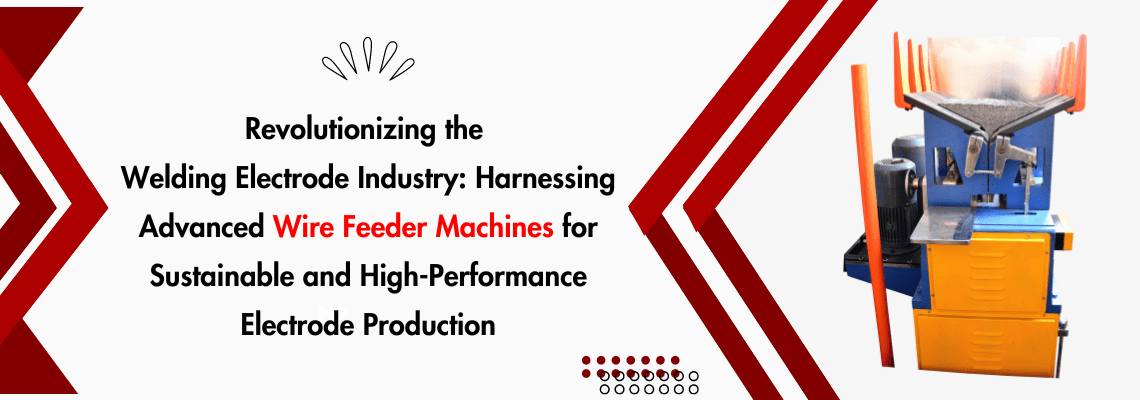Introduction
The welding electrode industry is on the brink of a significant transformation as advanced wire feeder machines emerge as game-changers, revolutionizing how electrodes are manufactured and utilized. These machines are not just technological upgrades; they represent a paradigm shift that promises to enhance efficiency, sustainability, and overall weld quality.
Unveiling the Benefits of Advanced Wire Feeder Machines
Precision and Consistency
Traditional wire feeding systems often suffer from inconsistencies in wire feed rates and tension, leading to irregular welds and potential defects. Advanced wire feeder machines address this issue with precise control mechanisms, ensuring consistent wire feeding rates and pressure throughout welding. This translates to improved weld quality, reduced rework, and enhanced product reliability.
Efficiency and Productivity
Advanced wire feeder machines streamline welding by automating tasks like wire feeding, cutting, and retraction. This automation eliminates manual intervention, reducing labor costs and significantly increasing production speed. Imagine manufacturing electrodes at an extraordinary without compromising quality.

Sustainable Practices
Sustainability is becoming increasingly crucial in the welding industry, and advanced wire feeder machines are leading the way. These machines incorporate energy-efficient designs, reduce waste, and minimize the use of hazardous materials.
Data-Driven Optimization
Modern wire feeder machines have sensors and AI capabilities, collecting real-time data on wire feed parameters, welding conditions, and operator behavior. This data is then analyzed to optimize welding parameters, identify potential issues, and implement preventive maintenance. This data-driven approach ensures peak performance, minimizes downtime, and contributes to continuous process improvement.
Versatility and Adaptability
Advanced wire feeder machines are designed to accommodate various electrode types, diameters, and filler materials. This versatility caters to the diverse needs of various welding applications, from construction to automotive manufacturing.
The Impact on the Welding Industry
Enhanced Weld Quality
The precision and consistency offered by advanced wire feeder machines contribute to improved weld quality, reducing defects and rework. This translates to more robust, reliable welds that meet even the most stringent quality standards.
Reduced Production Costs
Advanced wire feeder machines’ efficiency and productivity gains significantly reduce labor costs and production time. This translates to lower overall manufacturing costs and improved profitability for welding electrode manufacturers.
Environmental Responsibility
The sustainable practices embedded in advanced wire feeder machines contribute to a reduced environmental footprint for the welding industry. This aligns with the growing demand for eco-friendly manufacturing practices and enhances the industry’s sustainability credentials.
Continuous Innovation
The data-driven approach enabled by advanced wire feeder machines fosters a culture of continuous innovation within the welding industry. Manufacturers can continuously analyze data, identify areas for improvement, and develop next-generation wire-feeding systems that push the boundaries of performance and sustainability.

Empowering Skilled Operators
While advanced wire feeder machines automate specific tasks, they also elevate the role of skilled operators. Operators are now responsible for monitoring data, optimizing parameters, and troubleshooting potential issues. This shift requires higher technical expertise and problem-solving skills, empowering operators to play a more strategic role in the manufacturing process.
Conclusion: A Brighter Future for Welding Electrode Manufacturing
Advanced wire feeder machines are revolutionizing the welding electrode industry, ushering in an era of precision, efficiency, sustainability, and innovation. By embracing these machines, manufacturers can enhance their production capabilities and product quality and demonstrate their commitment to environmental responsibility and continuous improvement.
The future of welding electrode manufacturing is undoubtedly intertwined with the advancements in wire feeder technology. Manufacturers who embrace these transformative technologies will lead the industry in terms of quality and efficiency and position themselves as pioneers of sustainable and high-performance electrode production.





